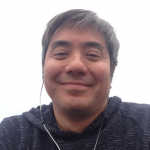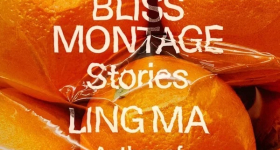Lillian Howan’s debut novel, The Charm Buyers, follows Marc Antoine Chen as he navigates through the familial, economic and cultural complexities of late 20th century Tahiti in the shadow of French nuclear testing on Mururoa. Invoking a contemporary version of flânerie as encountered in recent novels such as Teju Cole’s debut, Open City, or Tao Lin’s Taipei, Howan’s narrator is the type of flâneur typically found in 19th century French novels. Here in Howan’s impressive debut, the flâneur, a fin de siècle character type, has been boldly imported into the postcolonial landscape of French Polynesia. Staking his claim to a certain moral ambiguity, Chen begins his narration: “The things you’ve heard about me — they’re true, especially the lies.” Howan, in exquisite prose, describes the perpetual moral confusion of the narrator as he journeys through the upper class Hakka society of Tahiti. Howan’s choice to style her narrator in the morally confused tradition of the flâneur is especially apt given the competing array of social, historical and familial engagements that Marc Chen navigates throughout the novel. Even as one of Baudelaire’s urban chroniclers typified a confrontation with European fin de siècle modernity in the 19th century, Howan’s narrator, Marc Chen, exemplifies an encounter with the archipelagic postcoloniality of late 20th century Pacific cultures grappling with the long-term legacies of American and European empire. Marc Chen’s moral ambiguity mirrors and models his response to his lived historical, cultural and social complexities.
Howan’s writing is supple and elegant and serves as a perfect counterpoint to her narrator’s cynicism and tired worldliness. Marc, the son of a successful pearl dealer, is constantly attempting to emerge from his family’s reputation and develop his own identity. The novel opens with him recounting the time he spent living with his great-grandmother, A-tai, who is characterized as an almost atavistic ancestor serving as a counterpoint to the modern and postcolonial Tahitian society that Marc moves through. But she is also a touchstone for Marc, something he identifies with early in the novel: “A-tai and I were like the creatures in the fairy tales I read at school — crooked, misshapen creatures hidden with the junk along the walls, the sour-smelling jars and the darkness of the rooms.” His great-grandmother also represents a range of pre-modern magical powers: “A-tai sometimes talked about charms and magical talismans … how you had to keep a charm hidden so that its power could protect you … These were the stories I knew, tales of magic.” These hidden and disguised magics form an undercurrent throughout the narrative and yet Howan refrains from simply positing these magics as an anti-modern alternative to the complexities of the postcolonial nuclear Pacific Rim. Instead, the theme of hidden and working magics that function according to older forms of material and social logics are presented as existing alongside the modern logics of capitalism and nuclear colonialism. Howan does not present them as an either/or but rather suggests that the old ways of being in the world have continued to exist alongside emergent modernities. Howan conjures a world where even as Marc Chen navigates the rise and fall in fortune of his economic and romantic destinies, he does so with the full weight of his familial and cultural past with all of its mythic resonances and non-western modalities.
The narrative centers around Marc Chen’s love for his cousin Marie-Laure, his affair with Aurore du Chatelet, a wealthy French painter and his illicit smuggling enterprise with his cousin, Radish. Although Marc remains in love with Marie-Laure throughout the novel, she leaves Tahiti for a time, only to return with a crippling disease whose origins are suggested to lie in the French nuclear testing program (whose 193 nuclear tests ran from 1966-2009 on Mururoa and Fangataufa). Her well-being pivots on Marc’s dealings with a shaman where he trades his material good fortune for a charm to preserve Marie-Laure’s life. However, the ultimate efficacy for the charm is uncertain as Marie-Laure improves but does not make a full recovery. The novel concludes with Marie-Laure taking a flight to Australia in hopes of obtaining a transplant that would help her fully recover. While Howan’s novel does not offer any easy closure to the narrative, she captures the zeitgeist of a society that could easily be the focus of global conversations about climate change and the legacies of nuclear colonialism. Howan’s major achievement in The Charm Buyers is to center the Pacific intersections of Asian settler colonialism and western nuclear colonialism through the lens of a narrator, whose ambiguities illuminate the complexities and confusions of our contemporary global moment.










Comments